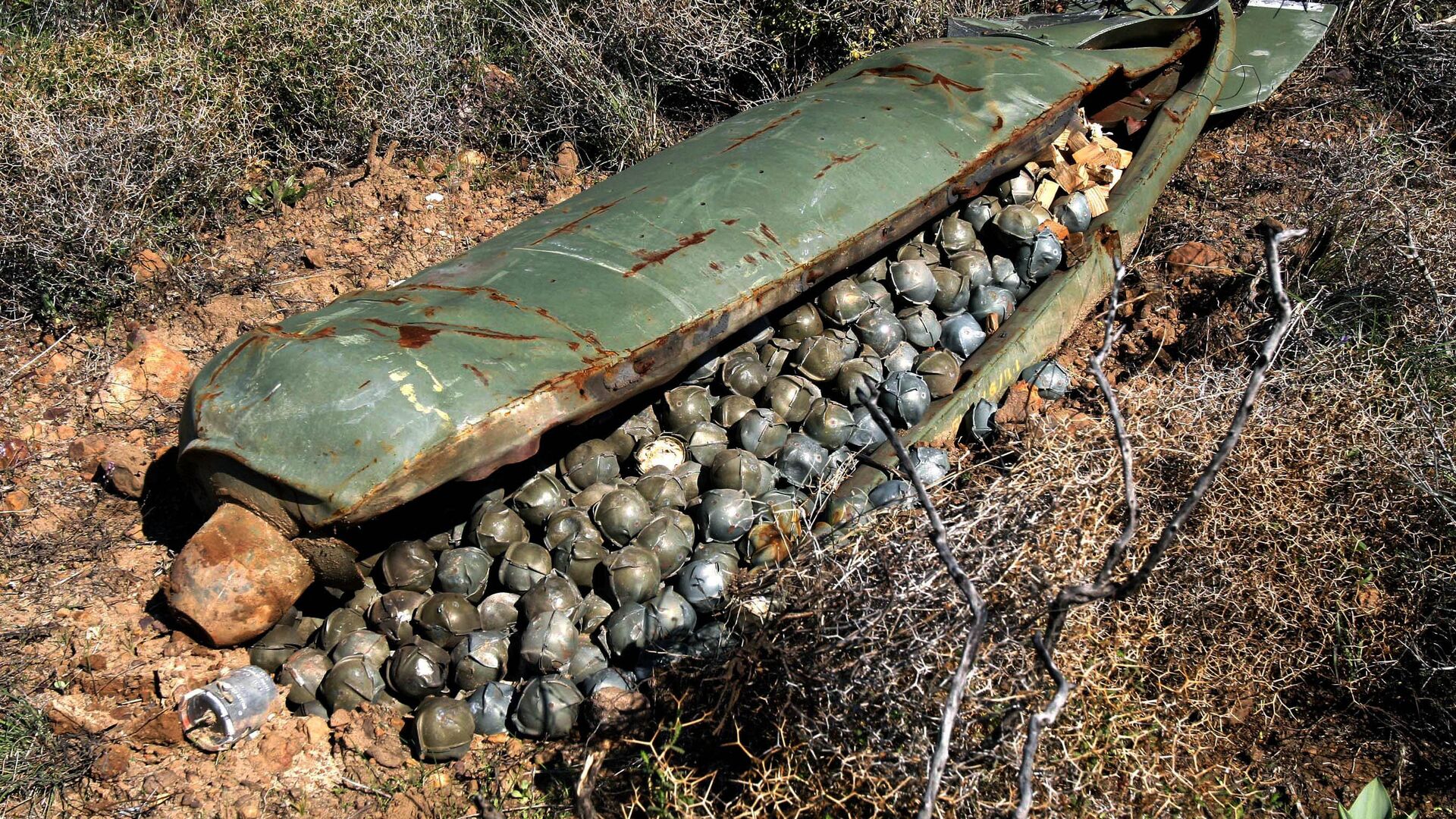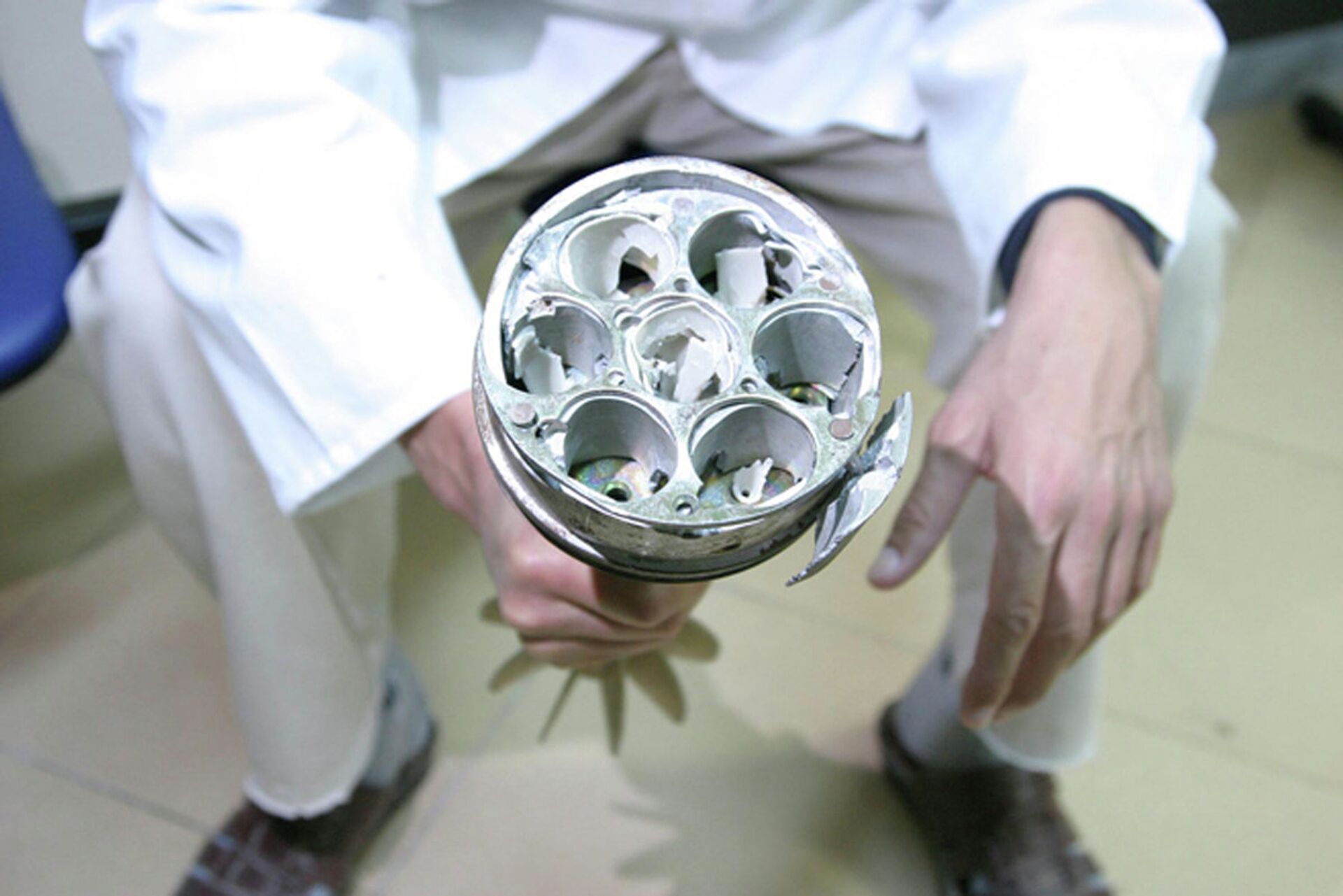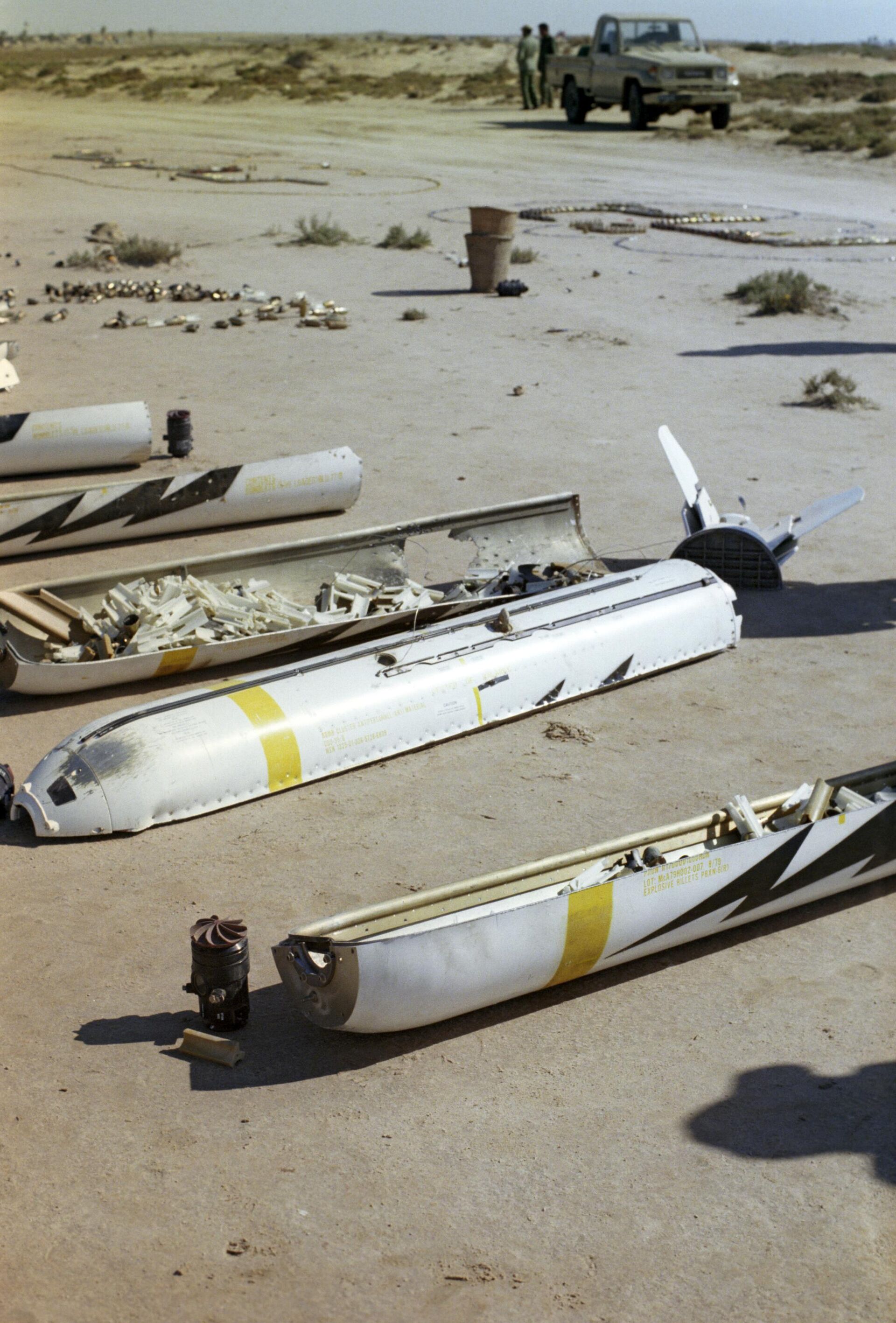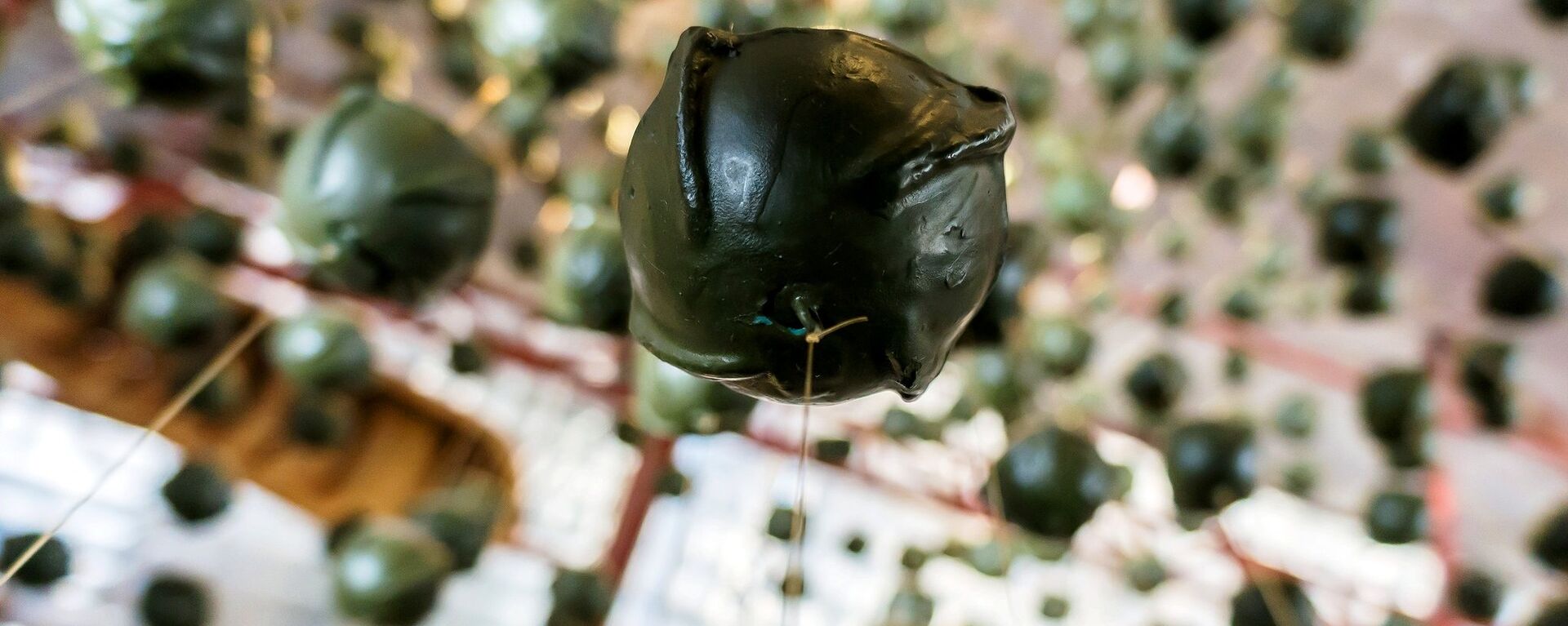https://sputnikglobe.com/20230628/us-record-of-cluster-bombs-rings-alarm-bells-for-ukrainians-1111528359.html
US Record of Cluster Bombs Rings Alarm Bells for Ukrainians
US Record of Cluster Bombs Rings Alarm Bells for Ukrainians
Sputnik International
A bipartisan group of US lawmakers has renewed calls to send cluster munitions to Ukraine, as Kiev struggles to push its much-discussed counteroffensive. What are cluster bombs and what risks is their use fraught with?
2023-06-28T18:38+0000
2023-06-28T18:38+0000
2023-06-28T18:57+0000
joe biden
ukraine
us
cluster munitions
world
ukrainian armed forces
nato
house foreign affairs committee
high mobility artillery rocket system (himars)
convention on cluster munitions
https://cdn1.img.sputnikglobe.com/img/103929/65/1039296552_0:227:2700:1746_1920x0_80_0_0_5af0818349e3bd03f40118de8aa374d8.jpg
US Representatives Joe Wilson (R-SC), Steve Cohen (D-TN), and Victoria Spartz (R-IN) urged President Joe Biden to dispatch dual-purpose improved conventional munitions (DPICM), commonly known as "cluster" shells, to Ukraine on June 25.It's not the first time that US politicians have been discussing equipping the Ukrainian military with cluster munitions.Last Thursday, US Deputy Assistant Secretary of Defense for Russia, Ukraine, and Eurasia Laura Cooper told lawmakers on the House Foreign Affairs Committee that DPICMs "would be useful, especially against dug-in Russian positions on the battlefield."On March 21, four top Republican lawmakers on the House and Senate Foreign Affairs and Armed Cervices committees – James Risch, Roger Wicker, Michael McCaul and Mike Rogers – sent a letter to the US president insisting that while not without risks, this could solve the problem of Kiev's artillery ammunition shortage.In December 2022, Kiev itself made a request for cluster munitions to Washington. As per the US press, Kiev planned to launch the weapons from High Mobility Artillery Rocket Systems (HIMARS) and 155 mm Howitzers. However, at that time, Joe Biden refused to provide the weapons banned by over 120 countries to the Ukrainian military.What are Cluster Munitions?The DPICM is an artillery or surface-to-surface missile warhead that releases dozens to hundreds of smaller submunitions that can use shaped charges for the anti-armor role and fragmentation for the antipersonnel role. The air-to-surface variety of the shells is known as a "cluster bomb." One munition can destroy multiple targets at once, meaning that fewer missiles are needed.Some US experts consider that most relevant for Ukraine would be the M483A1 and M864 artillery which could be fired from Ukraine's Western-made 155mm artillery systems. The 2008 Convention on Cluster Munitions (CCM) bans the use, production, transfer, and stockpiling of cluster munitions and requires destruction of stockpiles of the weapons, as well as clearance of areas contaminated by remnants and bomblets and victim assistance. The weapons were prohibited for a good reason: inaccurate cluster munitions pose an immediate threat to civilians by randomly scattering submunitions over a wide area. In addition, myriads of unexploded remnants continue to endanger civilians long after the conflict.The US, however, stores plenty of cluster munitions.US Record of Using Cluster MunitionsCluster bombs were first used during the Second World War. For its part, the US started to extensively use them in the 1960s and the 1970s in Southeast Asia. Citing the International Committee of the Red Cross (ICRC) a March 2022 congressional report says that "in Laos alone, 9 to 27 million unexploded submunitions remained after the conflict, resulting in over 10,000 civilian casualties to date."During the Gulf War of 1991, the US and its allies dropped around 61,000 cluster bombs containing some 20 million submunitions. In addition, the coalition also used surface-to-surface DPICMs delivered by artillery and rocket systems. It is believed that 30 million or more DPICM submunitions were used during the conflict.In 1999, NATO forces dropped 1,765 cluster bombs containing around 295,000 submunitions on Yugoslavia. Despite common belief that these bombs would be used against military installations, it was reported in June 1999 that a NATO airstrike involving cluster bombs on an airfield in Nis on May 7, 1999, went off target and hit a hospital and adjoining civilian areas. Another report said about five boys were killed and two injured by a cluster bomb submunition that exploded near the village of Doganovic in southern Kosovo.Nonetheless, the US and NATO allies continued to use the inaccurate munitions. Between 2001 and 2002, the US Air Force bombed Afghanistan with 1,228 cluster munitions containing 248,056 submunitions.The US and British military fired around 13,000 cluster munitions containing up to two million submunitions during the first three weeks of the invasion of Iraq in 2003.As per Human Rights Watch, American and British ground forces widely used cluster munitions in major cities of Iraq which led to hundreds of civilian casualties, including children. Lots of unexploded submunitions were later discovered in residential areas near schools and playgrounds resulting in further injuries and deaths.US Cluster Munition StockpilesDespite an indiscriminate use of cluster bombs and shells by the US military that led to extensive casualties and destruction, Washington did not join the international convention prohibiting the deadly weapons. Neither did it destroy its vast stockpiles of cluster munitions. The US original provisions drafted in 2008 and seeking to remove large portions of the weapons from the US stockpiles were later reversed.Thus, a Department of Defense memo inked on November 30, 2017 indefinitely delayed implementation of a ban on using "unreliable types of cluster munitions" which was expected to take effect on January 1, 2019, in the US. Furthermore, the new policy envisaged the US acquisition of cluster munitions from foreign sources.The US maintains restrictions on exports of cluster munitions, allowing selling DPICMs that do not result in more than 1% unexploded ordnance. Under US law, the recipient should make a commitment not to use the weapons in civilian areas.Moreover, some US scholars suggest that Washington's move could alienate some of its allies given that 23 NATO members are party to the Convention on Cluster Munitions.
https://sputnikglobe.com/20230426/us-should-provide-cluster-bombs-to-ukraine--congressman-1109860400.html
https://sputnikglobe.com/20220830/cluster-bombs-butterfly-mines-phosphorus-munitions-prohibited-weapons-used-by-ukraine-1100038913.html
https://sputnikglobe.com/20230324/no-guilt-no-shame-western-leaders-excuses-for-nato-bombing-of-yugoslavia-1108758495.html
https://sputnikglobe.com/20200903/us-tests-next-generation-fragmentation-bomb-as-viable-substitute-for-cluster-munitions-1080360316.html
ukraine
Sputnik International
feedback@sputniknews.com
+74956456601
MIA „Rossiya Segodnya“
2023
News
en_EN
Sputnik International
feedback@sputniknews.com
+74956456601
MIA „Rossiya Segodnya“
Sputnik International
feedback@sputniknews.com
+74956456601
MIA „Rossiya Segodnya“
us aid to ukraine, us cluster bombs, convention on cluster munitions, us cluster munitions ukraine, us lawmakers cluster munitions ukraine, us cluster bombs yugoslavia, submunitions, civilian casualties cluster bombs, inaccurate cluster munitions, remnants of cluster munitions pose danger, unexploded submunitions of cluster bombs, human right watch cluster munitions
us aid to ukraine, us cluster bombs, convention on cluster munitions, us cluster munitions ukraine, us lawmakers cluster munitions ukraine, us cluster bombs yugoslavia, submunitions, civilian casualties cluster bombs, inaccurate cluster munitions, remnants of cluster munitions pose danger, unexploded submunitions of cluster bombs, human right watch cluster munitions
US Record of Cluster Bombs Rings Alarm Bells for Ukrainians
18:38 GMT 28.06.2023 (Updated: 18:57 GMT 28.06.2023) A bipartisan group of US lawmakers has renewed calls to send cluster munitions to Ukraine, as Kiev struggles to push its much-discussed counteroffensive. What are cluster bombs and what risks is their use fraught with?
US Representatives Joe Wilson (R-SC), Steve Cohen (D-TN), and Victoria Spartz (R-IN) urged President Joe Biden to dispatch dual-purpose improved conventional munitions (DPICM), commonly known as "cluster" shells, to Ukraine on June 25.
"Transferring DPICMs to Ukraine presents an opportunity to provide the Ukrainian Armed Forces with a powerful capability to use against the Russian army and mercenary forces," the lawmakers' letter said.
It's not the first time that US politicians have been discussing equipping the Ukrainian military
with cluster munitions.
Last Thursday, US Deputy Assistant Secretary of Defense for Russia, Ukraine, and Eurasia Laura Cooper told lawmakers on the House Foreign Affairs Committee that DPICMs "would be useful, especially against dug-in Russian positions on the battlefield."
On March 21, four top Republican lawmakers on the House and Senate Foreign Affairs and Armed Cervices committees – James Risch, Roger Wicker, Michael McCaul and Mike Rogers – sent a letter to the US president insisting that while not without risks, this could solve the problem of Kiev's artillery
ammunition shortage.
"[DPICMs] are highly effective against personnel — both enemy troops in the open and entrenched infantry — and mechanized vehicles," wrote the GOP congressmen. "The United States relied on similar cluster munitions during the Cold War as a means of offsetting Soviet military advantages in manpower, artillery, and armored vehicles."
In December 2022, Kiev itself made a request for cluster munitions to Washington. As per the US press, Kiev planned to
launch the weapons from High Mobility Artillery Rocket Systems (HIMARS) and 155 mm Howitzers. However, at that time, Joe Biden refused to provide the weapons
banned by over 120 countries to the Ukrainian military.
What are Cluster Munitions?
The DPICM is an artillery or surface-to-surface missile warhead that releases dozens to hundreds of smaller submunitions that can use shaped charges for the anti-armor role and fragmentation for the antipersonnel role. The air-to-surface variety of the shells is known as a "cluster bomb." One munition can destroy multiple targets at once, meaning that fewer missiles are needed.
Some US experts consider that most relevant for Ukraine would be the M483A1 and M864 artillery which could be fired from Ukraine's Western-made 155mm artillery systems.
The 2008 Convention on Cluster Munitions (CCM) bans the use, production, transfer, and stockpiling of cluster munitions and requires destruction of stockpiles of the weapons, as well as clearance of areas contaminated by remnants and bomblets and victim assistance.
The weapons were prohibited for a good reason: inaccurate cluster munitions pose an immediate threat to civilians by randomly scattering submunitions over a wide area. In addition, myriads of unexploded remnants continue to endanger civilians long after the conflict.
The US, however, stores plenty of cluster munitions.
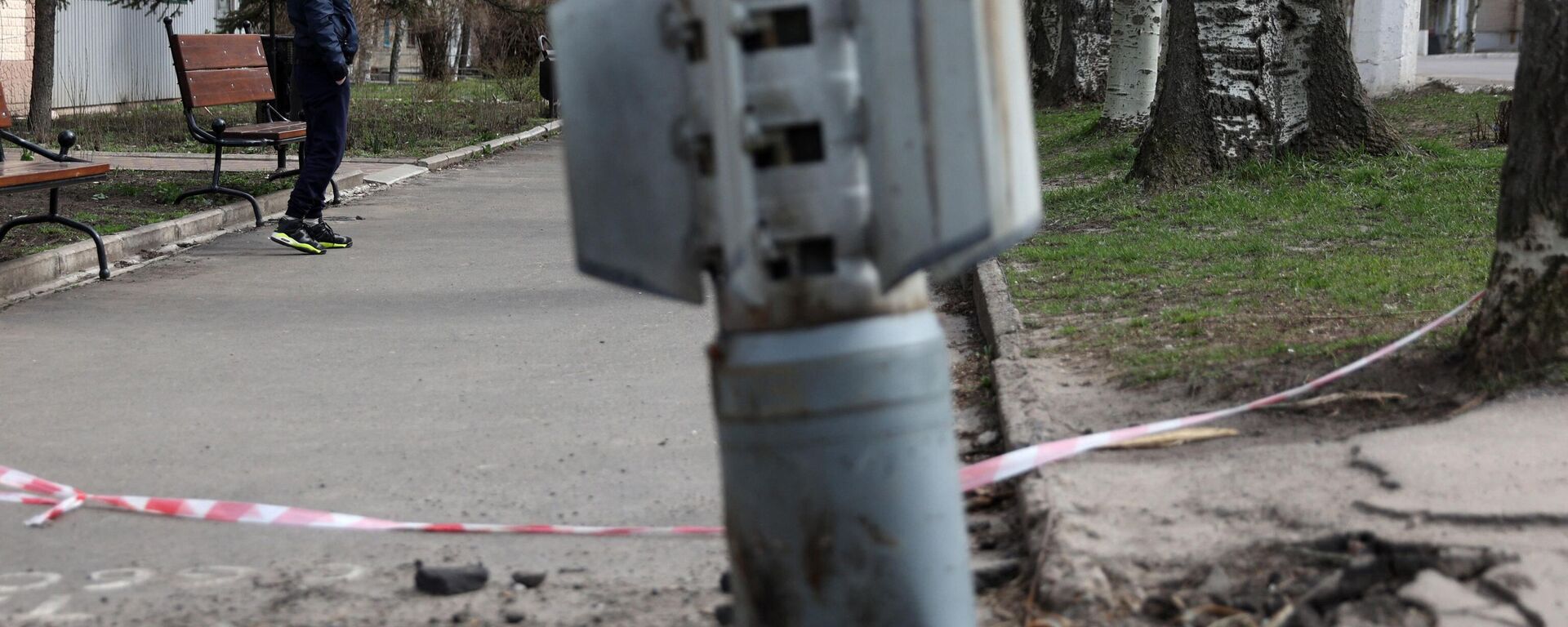
30 August 2022, 04:00 GMT
US Record of Using Cluster Munitions
Cluster bombs were first used during the Second World War. For its part, the US started to extensively use them in the 1960s and the 1970s in Southeast Asia. Citing the International Committee of the Red Cross (ICRC) a March 2022 congressional
report says that "in Laos alone,
9 to 27 million unexploded submunitions remained after the conflict, resulting in over 10,000 civilian casualties to date."
During the Gulf War of 1991, the US and its allies dropped around 61,000 cluster bombs containing some 20 million submunitions. In addition, the coalition also used surface-to-surface DPICMs delivered by artillery and rocket systems. It is believed that 30 million or more DPICM submunitions were used during the conflict.
In 1999, NATO forces dropped 1,765 cluster bombs containing around 295,000 submunitions on Yugoslavia. Despite common belief that these bombs would be used against military installations, it was reported in June 1999 that a NATO airstrike involving cluster bombs on an airfield in Nis on May 7, 1999, went off target and hit a hospital and adjoining civilian areas. Another report said about five boys were killed and two injured by a cluster bomb submunition that exploded near the village of Doganovic in southern Kosovo.
Nonetheless, the US and NATO allies continued to use the inaccurate munitions. Between 2001 and 2002, the US Air Force bombed Afghanistan with 1,228 cluster munitions containing 248,056 submunitions.
The US and British military fired around 13,000 cluster munitions containing up to two million submunitions during the first three weeks of the invasion of Iraq in 2003.
As per Human Rights Watch, American and British ground forces widely used cluster munitions in major cities of Iraq which led to hundreds of civilian casualties, including children. Lots of unexploded submunitions were later discovered in residential areas near schools and playgrounds resulting in further injuries and deaths.
"13-year-old Falah Hassan lost his right hand, his left index finger, and soft tissue in his lower limbs when an unexploded submunition, left by a cluster munition attack, detonated in al-Hilla," recalled HRW researcher Bonnie Docherty in her May 2023 report. "His mother, who lay in the next bed when we visited him in hospital in mid-May, suffered injuries to her abdomen, uterus, and large and small intestines from the same explosion."
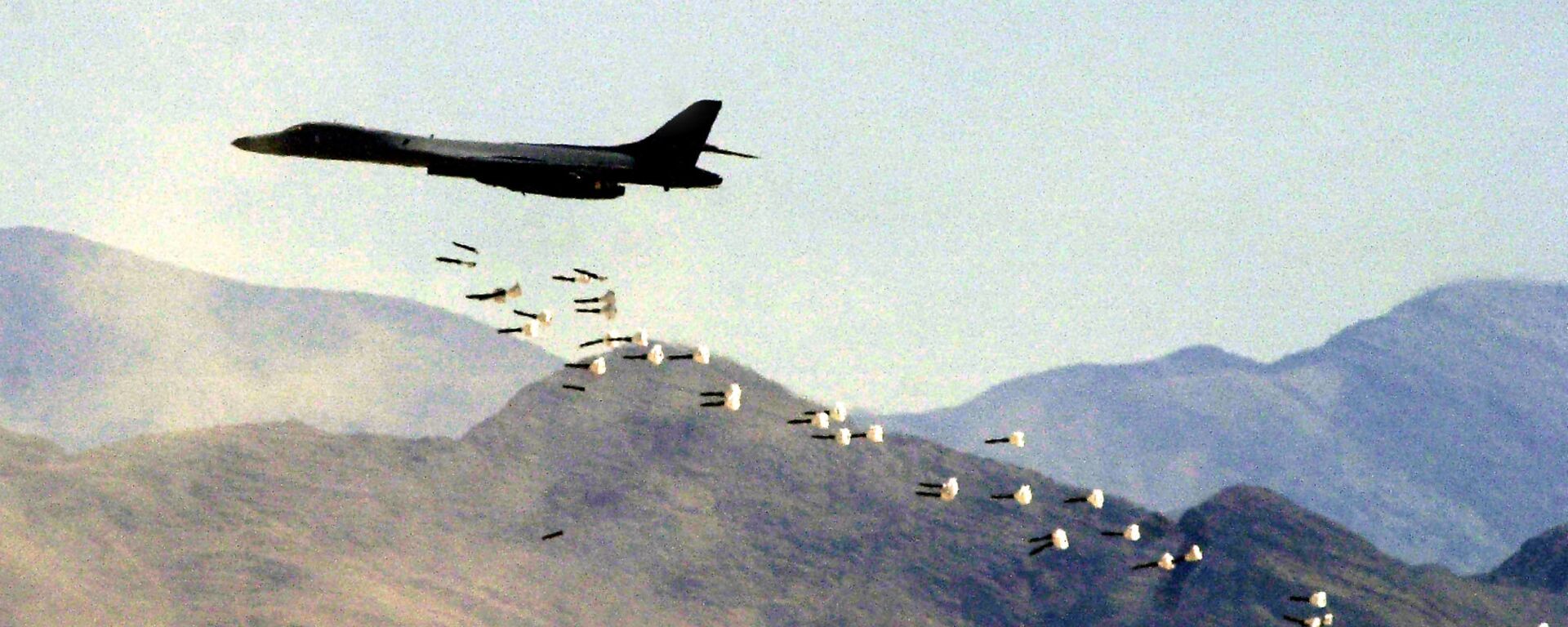
3 September 2020, 19:00 GMT
US Cluster Munition Stockpiles
Despite an indiscriminate use of cluster bombs and shells by the US military that led to extensive casualties and destruction, Washington did not join the international convention prohibiting the deadly weapons. Neither did it destroy its vast stockpiles of cluster munitions. The US original provisions drafted in 2008 and seeking to remove large portions of the weapons from the US stockpiles were later reversed.
Thus, a Department of Defense
memo inked on November 30, 2017 indefinitely delayed implementation of a ban on using "unreliable types of cluster munitions" which was expected to take effect on January 1, 2019, in the US. Furthermore, the new policy envisaged the US acquisition of cluster munitions from foreign sources.
The US
maintains restrictions on exports of cluster munitions, allowing selling DPICMs that do not result in more than 1% unexploded ordnance. Under US law, the recipient should make a commitment not to use the weapons in civilian areas.
Previously, Kiev failed to meet its commitments not to use Western lethal arms against civilians, civil objects and the Russian territory which makes one wonder whether the Ukrainian military would observe the US obligations if provided by cluster shells.
Moreover, some US scholars suggest that Washington's move could alienate some of its allies given that 23 NATO members are party to the Convention on Cluster Munitions.
